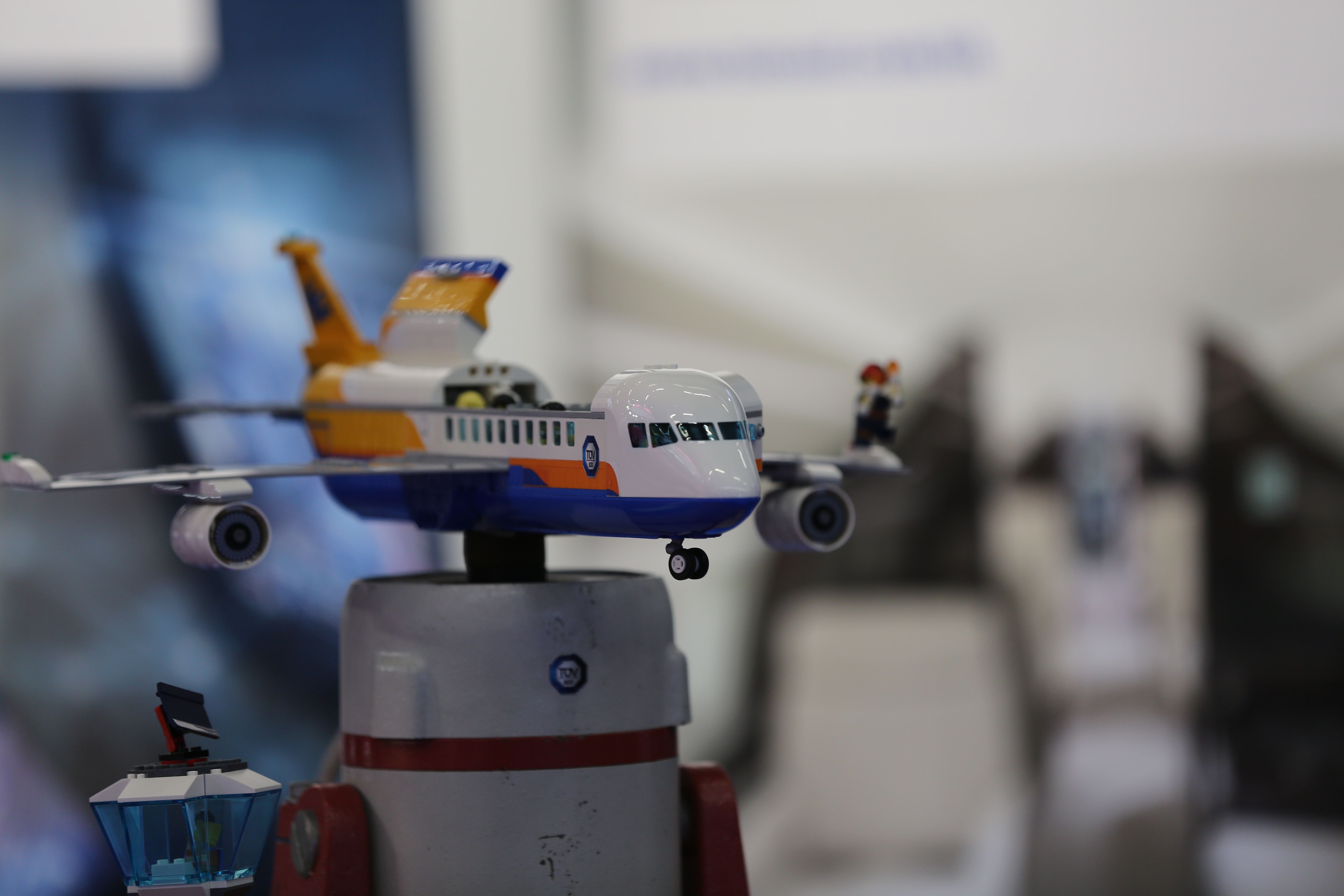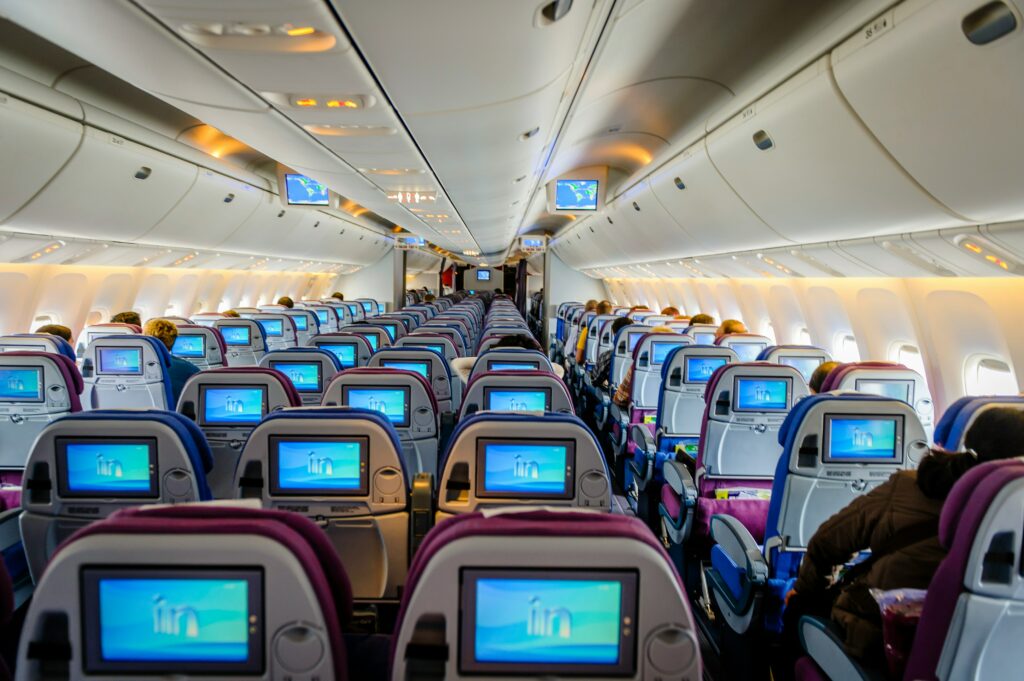
Accessibility in air travel is crucial for all passengers. Improved airline accessibility ensures that everyone, not only disabled passengers, but the elderly, families, and more, have access to the same benefits of air transportation.
Passengers have diverse needs, and therefore interact with the aircraft cabin in different ways. And attempting to meet these needs is key to creating ‘an environment of inclusion’ for all.
Accessibility for all
Global Market Estimates projects that the global airline industry market will grow at a compound annual growth rate of 25.5% from 2022 to 2027. Increased travel demand and the rapidly growing middle class are driving this growth. Tourist expenditure on air travel is also expected to reach $354 billion.
Passengers travel for different purposes. While most travel for pleasure, 12% are noted to be travelling for business. It’s estimated that companies spend $300 billion every year on corporate travel, with 20% of that amount allocated to airfare. Some passengers also travel with their families or with an organised group, while, others travel alone.
Passengers of all ages also travel on airlines. Airline travel still has no specific maximum age limit. Meanwhile, most airlines permit infants as young as a few days old to travel with parents or guardians.
Add to this passengers with mobility, sensory and cognitive impairments, or other special needs. Roughly 27 million passengers with disabilities travelled by air in 2019, as per the Department of Transportation (DOT). But also ‘20% of the adult population’, says Air Access for All maybe also have at the very least ‘mobile difficulty’.
The different criteria of airline passengers prove the importance of improving accessibility. Making accessibility a top priority conveys to passengers that airlines value their individual needs whilst also astutely responding to the needs of a considerable market share.
As such, increased airline accessibility measures offer trickle-down benefits for all travellers.
Space saving seating
Airlines have been working on different tactics to achieve accessibility for all across the passenger experience.
The seating is improved in Air Canada’s first upgraded Airbus A321. The new seats in both business and economy classes are designed to optimise passenger personal space and improve ergonomics. It will also make way for more storage space, which will give customers a more comfortable experience. The optimisation of the seats and enhanced ergonomics offer greater comfort for passengers with mobility issues, back problems, or other physical discomforts.
Japan Airline also announced that it will add a new Airbus A350-1000 to its fleet. The aircraft will feature all-new cabin interiors that will offer passengers a comfortable and relaxing cabin space.
The economy seats come with 13-inch 4K monitors, which may benefit elderly passengers more as the larger, high-resolution monitors may make it easier for them to view entertainment content or navigate the system without straining their eyes. The monitors are also beneficial for families traveling with children as these will lessen their boredom and restlessness.
Meanwhile, the premium economy class seats feature larger partitions for added privacy, allowing passengers to rest or relax without any distractions. The business-class cabin has fully private rooms, while the first-class cabin presents a large, adjustable sofa converts.

Manufacturers are testing various seat innovations to ensure accessible cabins for every passenger.
A strategic design company, LAYER, has created a new economy-class seating concept for Airbus. The company’s prototype features smart textiles, which allow passengers to adjust various factors via an app. The seat is made using smart textiles, which incorporate digital knitting with built-in conductive yarns and sensors.
Passengers can use the app to control the temperature, seat tension and pressures, and motion, as well as access different modes such as massage, mealtime, or sleep mode. This could outline a future where passengers who are particularly interested in monitoring their vials, or those who need to, can do so with ease.
For one, ‘accessibility supports active ageing’ and allows passengers who don’t necessarily need assistance to travel with dignity. As such, B/E Aerospace’s Knee-Rescue seats can be moved forwards or backwards depending on things like passenger height, age and flexibility. Cabin crew can then also anticipate passenger needs such as for tall passengers sat in front of children.
Safran Seats and Universal Movement, a transportation technology company, have also partnered to produce Interspace seat technology. The Interspace equipment improves premium economy passenger comfort through the deployment of easily deployable padded wings that fold out from the seat back. The seats are retrofittable, which means airlines don’t need to replace existing seat units. The padded wings allow passengers to rotate and lean on a cushioned surface.
This allows for ‘greater lateral support’, for instance for passengers who need aid without requiring completely reconfigured seating. Airlines can then also reconfigure economy cabins to lock out the central or outboard seats, which provides passengers with greater delineation and privacy.
From getting enough legroom to adjustable seating types, these innovations are just some of those seeking to redefine cabin capacity, accessibility and comfort.
Processes and convenience
Not only airline seats, but also the overall processes in aviation witness innovations.
Curating digital experiences for different passenger “personas” is also one way to encourage accessibility for one. Something as simple as having a seamless online connection can be a big help for frequent business travelers who are often multitasking during travel. But it can also help to respond to what Forbes has called the ‘reluctant traveler’ persona. It cannot be assumed that everyone, regardless of ability, is necessarily comfortable through the end-to-end-passenger experience.
Meanwhile, other groups like vacationers can take advantage of a carrier or airport-owned mobile apps that can guide them through check-in and onboard processes.
Another example of accessibility for all is when the United Airlines 787-10 Dreamliner installed its in-flight entertainment (IFE) system. The IFE not only mirrors the features found on many smartphones today but is also helpful for blind and visually impaired passengers.
It has seatback entertainment features, custom messaging tailored for customers with hearing disabilities or even auditory issues such that they can remain included in in-flight communication. Plus, additional navigation options for mobility-impaired passengers unable to swipe or use handset features.
Robotics is also one solution to achieving airline accessibility. Robots can help aviation in a variety of ways, from cleaning and maintenance to baggage handling and customer service.
Researchers are testing self-driving robot pods at Hartsfield-Jackson Atlanta International Airport (ATL) to safely transport people in crowded places. This is especially helpful for people with reduced mobility (PRM) or even those who cannot walk long distances due to certain circumstances.
Self-driving robots can also be programmed to communicate in multiple languages, which can help passengers who may have language barriers or difficulties. Plus, they can be designed with accessibility features that can help passengers with visual or hearing impairments.
At Cincinnati/Northern Kentucky International Airport (CVG), a fleet of fully autonomous delivery robots for food and retail is now available. These robots are making the lives of passengers more convenient, as they assist in making and receiving contactless orders.
Artificial intelligence (AI) is fast becoming an integral part of the aviation industry, contributing to airline accessibility. It is currently being deployed to revolutionise various operational processes within the airport and cabin, including boarding, baggage and security screening, identity checks, and passenger flow.
Airlines are increasingly putting AI on the frontlines of customer service through AI-powered chatbots. Malaysian low-cost airline AirAsia have replaced previous iteration ‘AVA’ with new AI-powered ‘Ask Bo’. This AI-powered chatbot will provide live updates on flight status and boarding information.

Addressing accessibility in airline travel
The future of accessible passenger experience will rely on principles that increasingly make air travel smarter and easier. Passengers should have a smart way to find the information they need whenever they encounter potential issues. They should also have access to personalised experiences, making them feel connected and special. Finally, the air travel experience should be easy.
Airlines can take advantage of social media and cloud services so passengers can easily check in, get flight updates, and for the airlines to have a holistic view of the customer. They must also reconsider seating designs with accessibility-forward approaches. In necessitating accessibility for one demographic, carriers can hope to see positives trickle-down to all.
Accessibility should be built into the DNA of assisting not only disabled passengers but every passenger.

